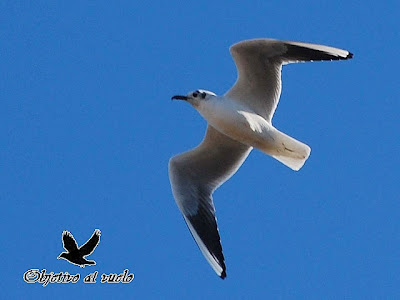....The Caspian Stonechat as seen by Colin Bushell on his recent trip to Israel....Well, its a Stonechat so was always likely to be a feature on Birds2blog.
Caspian Stonechat Colin Bushell.
The Caspian Stonechat S.m.variegata (CS) is described as one of six eastern Palearctic subspecies of Siberian Stonechat, though as if to confuse matters only two of the subspecies - S.m.maura and S.m.stejnegeri - are truly Siberian in that they breed in that area, the other four do not.
The CS breeds through Transcaucasia and moves through eastern Iraq and Arabia to spend the winter in north-east Africa. It is a passage migrant in Israel where CB saw his bird/s and where one or two have been recorded as wintering in the Eilat and Yotvata areas of Israel. The species has been recorded in Europe on occasions in different months of the year, two records of which have been in the UK.
The CS breeds through Transcaucasia and moves through eastern Iraq and Arabia to spend the winter in north-east Africa. It is a passage migrant in Israel where CB saw his bird/s and where one or two have been recorded as wintering in the Eilat and Yotvata areas of Israel. The species has been recorded in Europe on occasions in different months of the year, two records of which have been in the UK.
Stonechat Martin Jump
In the image above is a Stonechat I'm a little more acquainted with, and the plan is to get back up Clougha at the end of April by which time - if they are to make a come back up there in 2013 - they will have taken up residence and by mid-April will hopefully have started to lay eggs, the second week of the month being the average time for the majority of egg laying in the UK, though there is an extraordinary record of a Stonechat nest with young found in February in the unusually warm and early nesting season of 1995, this means that the clutch was completed by mid-February at the very latest.
Meanwhile, I'd better get out like everyone else and look for the returning migrants....Tuesday hopefully.



.jpg)













.JPG)
.JPG)












.jpg)






